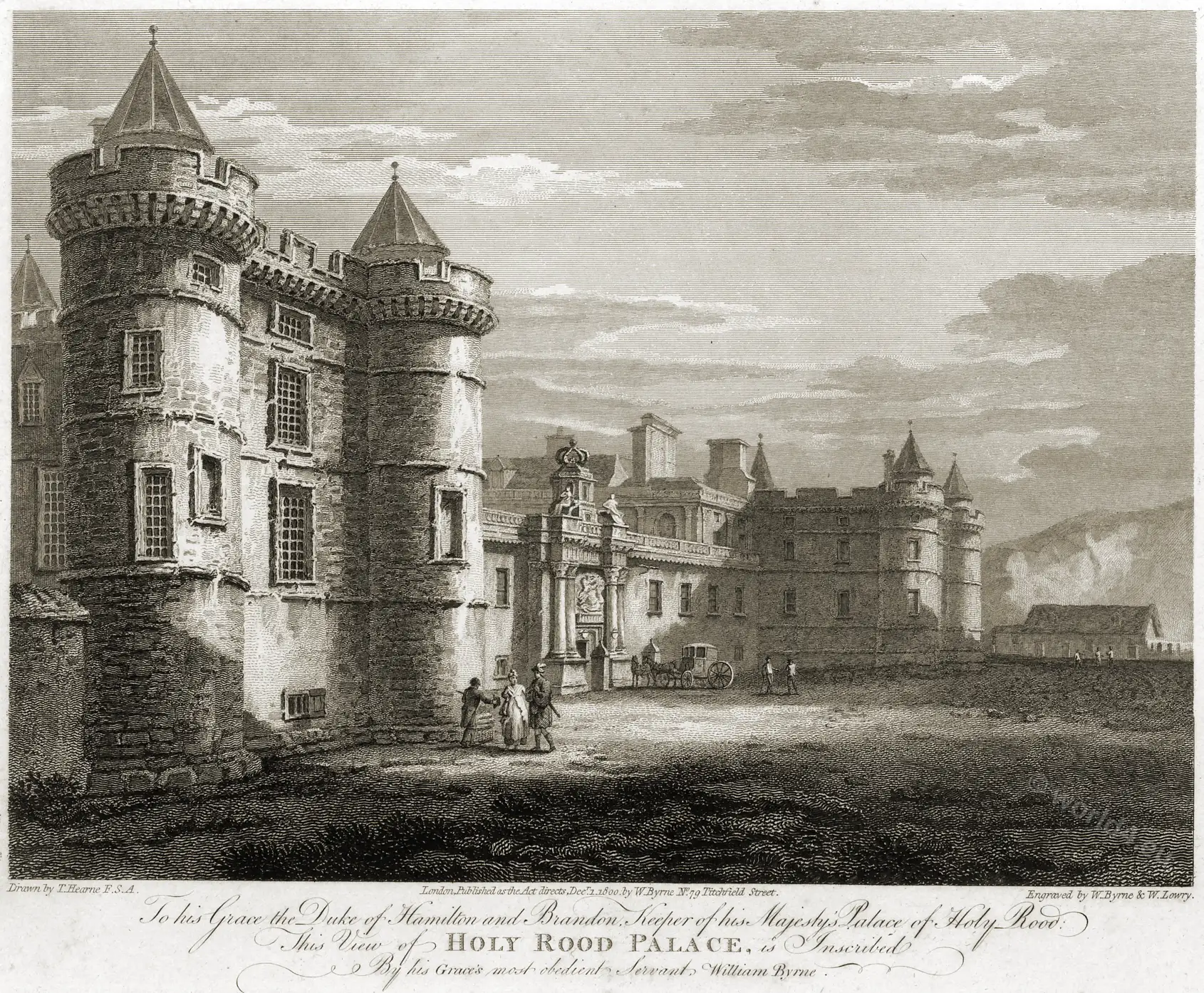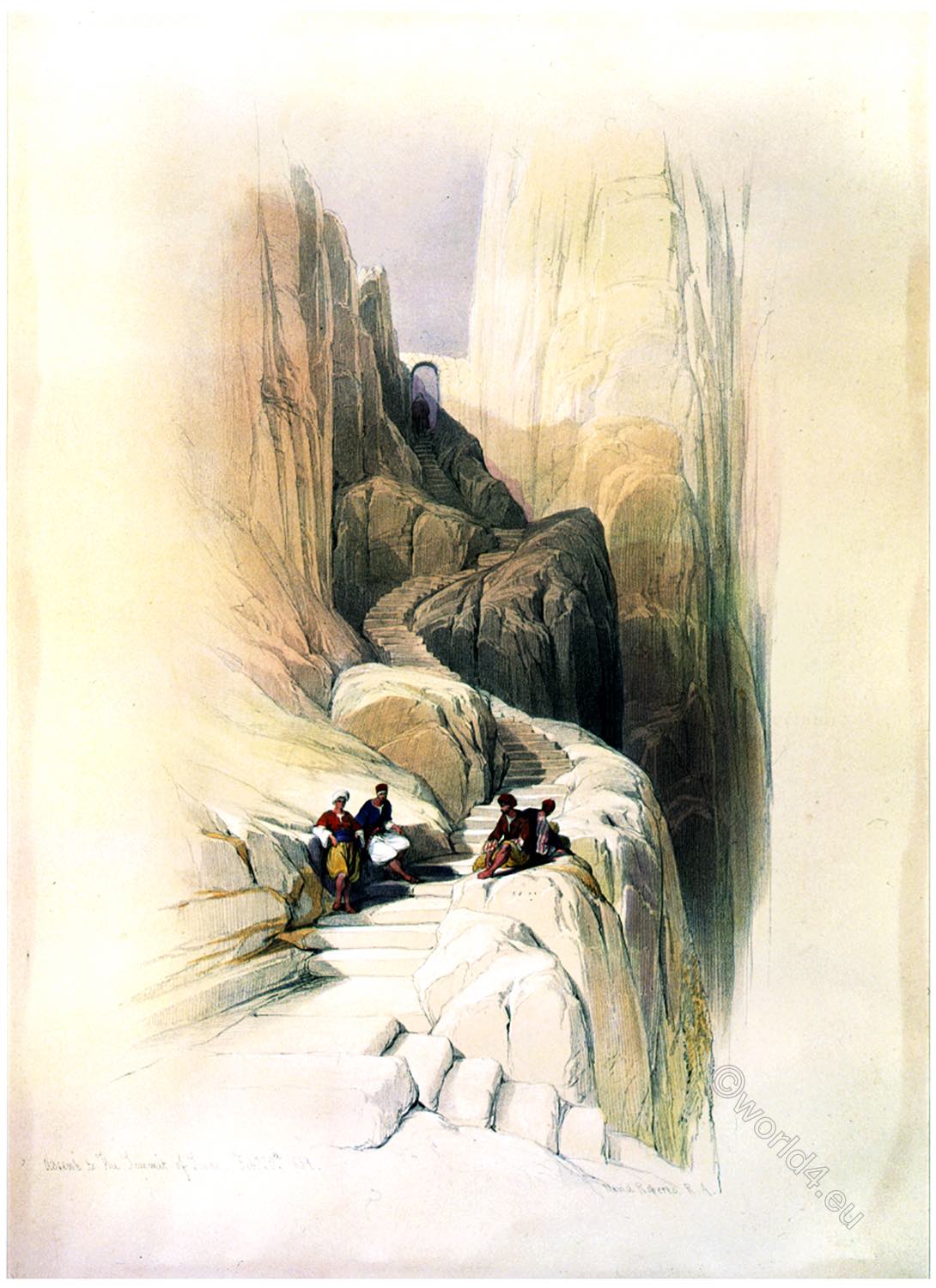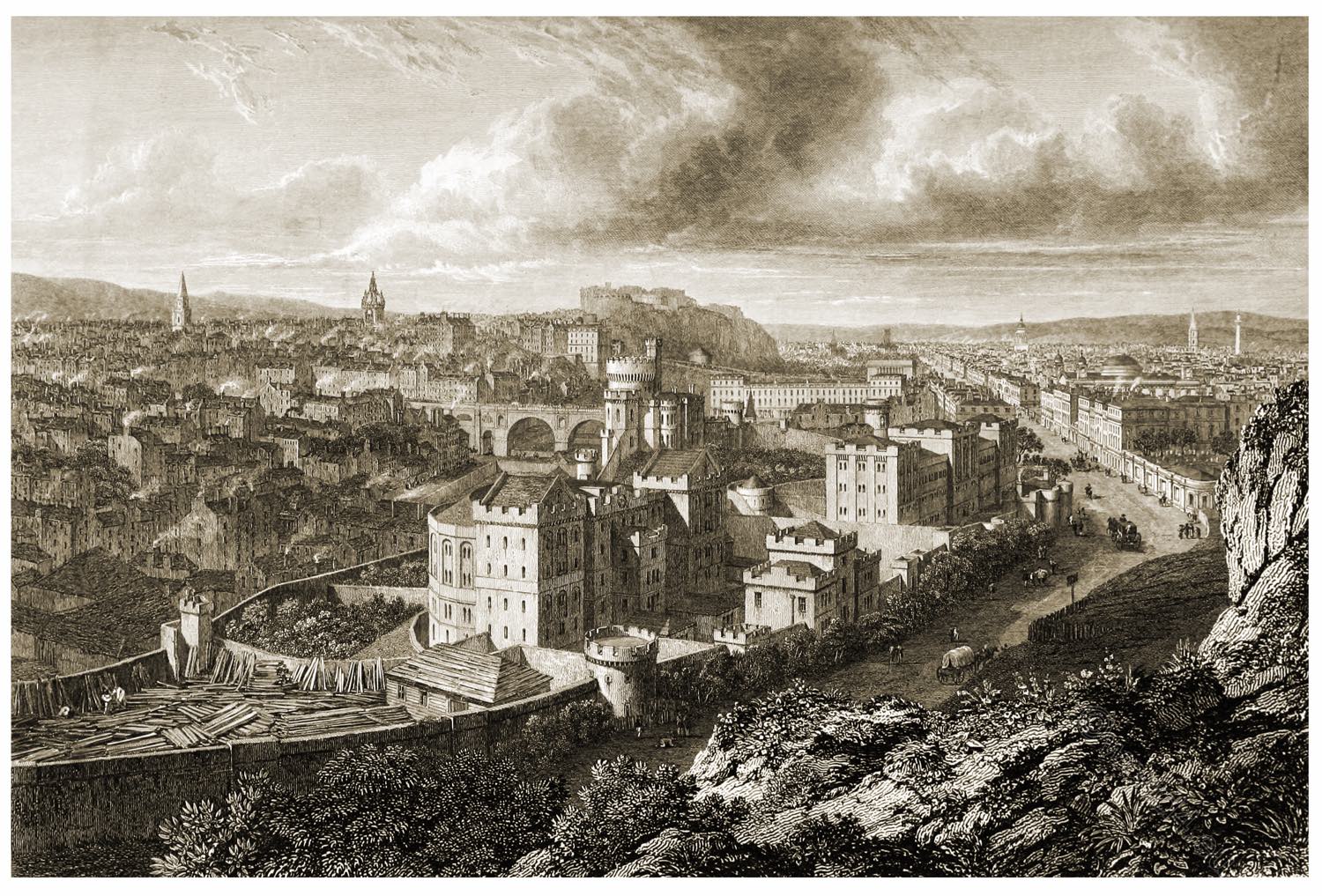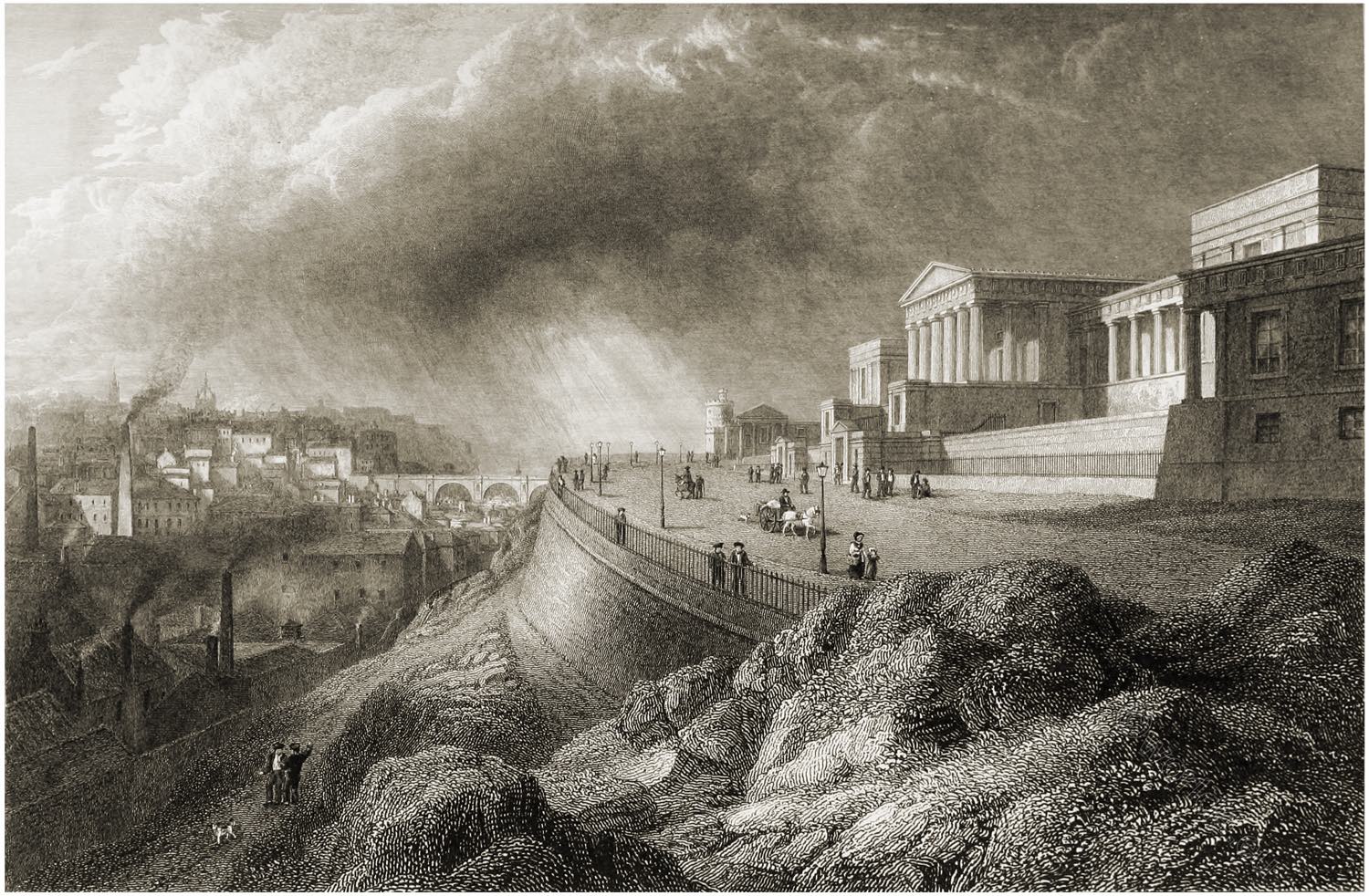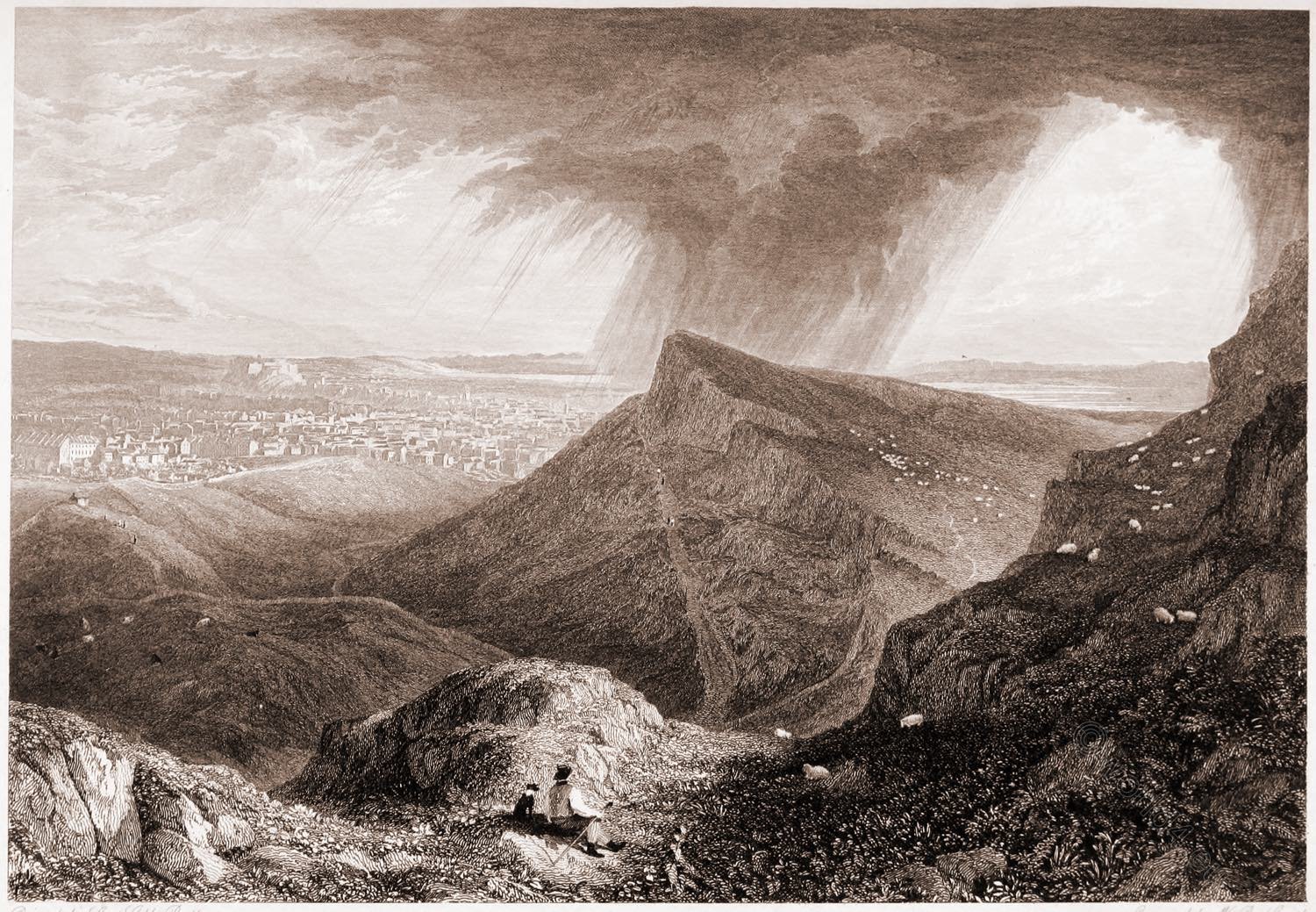
EDINBURGH, FROM THE ASCENT TO ARTHUR’S SEAT.
The accompanying view is taken from above the Basaltic Rocks near the road to Duddingstone, and about midway in the ascent to Arthur’s Seat on its southern side.
From this elevated situation we have a remarkably fine and varied prospect of the Scottish capital, with the Firth of Forth extending a considerable way up the distant country. The Castle of Edinburgh rises majestically in the middle distance, and is backed by the Corstorphine hills.
Nearer to the spectator, and occupying the centre of the scene, are Salisbury Crags, presenting a noble breastwork of precipitous rocks fronting the city, and elevated about five hundred and fifty feet above the level of the Firth of Forth.
The view is closed on the right-hand by Arthur’s Seat. On the left hand are the Echoing Rocks near the road to Duddingstone; and on a continuation of the same ridge, but contiguous to the city, is the cabin referred to in the interesting novel of “The Heart of Mid Lothian.”
Source: Select views of some of the principal cities of Europe by Robert Batty. London: Moon, Boys, and Graves, 1832.
Continuing
EDINBURGH.
The Castle, from the Grass Market.
Edinburgh, from the Calton Hill.
The Calton Hill, Nelson’s Monument.
Edinburgh, from St. Anthony’s Chapel.
Edinburgh, from the ascent to Arthur’s Seat.
Discover more from World4 Costume Culture History
Subscribe to get the latest posts sent to your email.

